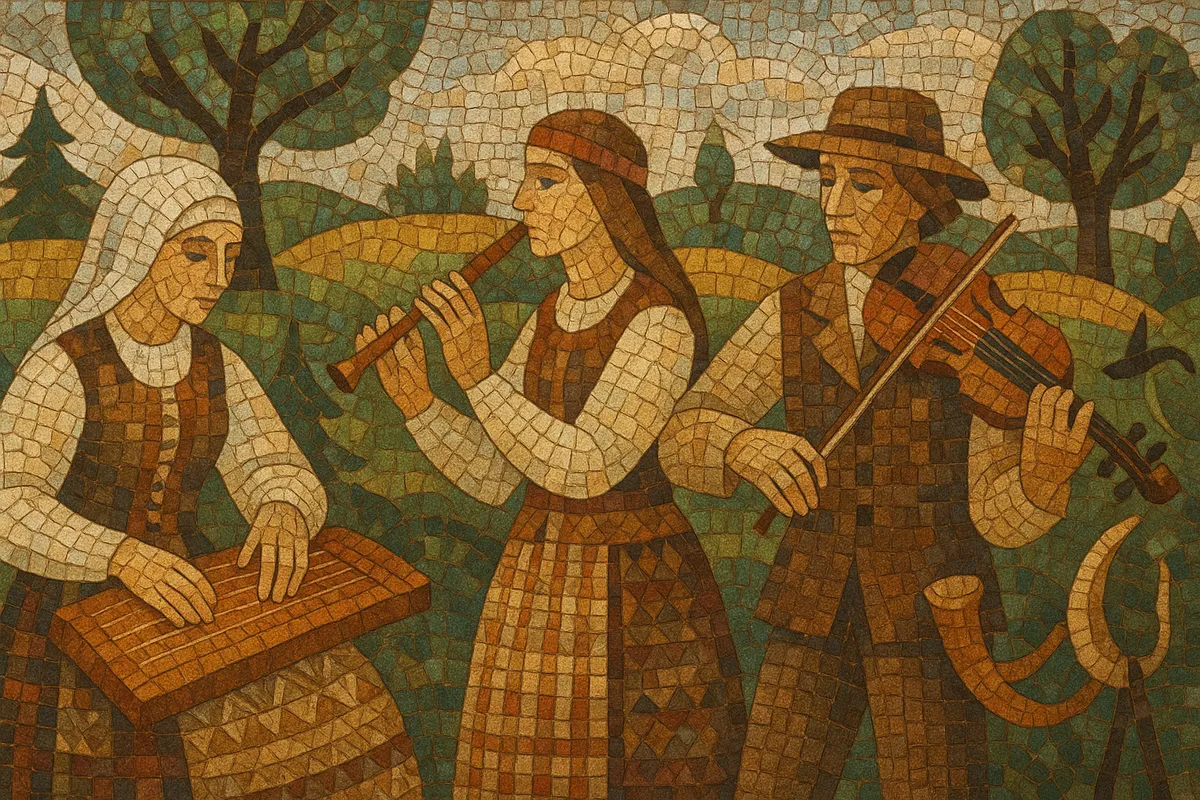Lithuanian folk music is the traditional music of Lithuania, marked by ancient multipart singing (sutartinės), modal melodies, and a close connection to the agrarian ritual calendar.
It features both monophonic and polyphonic practices, distinctive secondal harmonies and canonic entrances in sutartinės, and a rich palette of instruments such as the kanklės (Baltic zither), birbynė (reed pipe), lamzdelis (flute), daudytė (wooden trumpet), ragai (horns), skrabalai (wooden bells), dambrelis (jaw harp), and later additions like fiddle and accordion. Lyrics commonly reference nature, family, work, and life-cycle rites, and are strongly tied to regional styles (Aukštaitija, Žemaitija/Samogitia, Dzūkija, Suvalkija).
Lithuanian folk music preserves Baltic pre-Christian strata in melodies, ritual functions, and poetic imagery. The hallmark form, sutartinės (multipart songs), developed as communal music for work, weddings, and calendrical rites, using canonic imitation and tight intervals. While the practices long predate notation, systematic collecting and publication accelerated in the 19th century alongside the Lithuanian National Revival.
By the 19th–early 20th centuries, distinct regional idioms were well documented: Aukštaitija favored sutartinės and canonic/secondal textures; Žemaitija (Samogitia) prioritized narrower-range monody and robust declamation; Dzūkija and Suvalkija cultivated variant lyric and dance repertoires. Work songs, calendar-cycle songs, war and historical songs, wedding and lament genres all formed a living continuum tied to village life.
Between the wars, scholars and collectors codified song variants and instrumental traditions (kanklės, birbynė, lamzdelis, ragai). Under Soviet rule, staged folklore and state ensembles helped preserve visibility but often stylized material. From the late 1960s–1980s a parallel grassroots revival developed via university ensembles and folklore clubs, aiming for historically grounded performance.
In 2010, "Sutartinės, Lithuanian multipart songs" were inscribed on UNESCO’s Representative List of the Intangible Cultural Heritage of Humanity, affirming their uniqueness. Since the 1990s, authentic folk practice has coexisted with innovative currents—pagan/ritual folk, folk-rock, and folk-metal—bringing traditional modes, instruments, and Lithuanian-language texts to new audiences while sustaining community-based singing circles and regional festivals.


